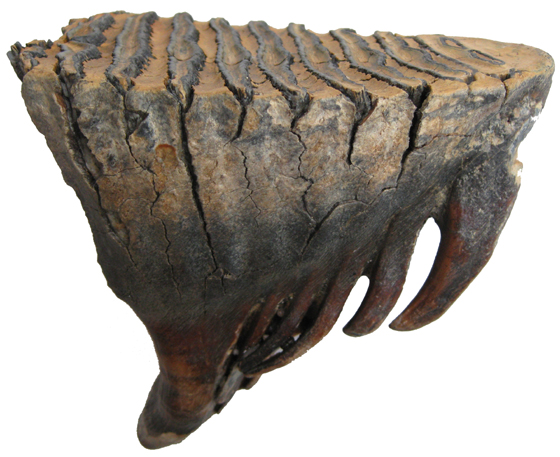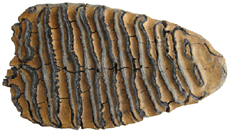
 |
 |
Unaltered
Remains
 |
|
Mammoth
Molar |
|
The concept of unaltered remains can refer to multiple modes of preservation. Freezing, encapsulation in amber (tree resin), desiccation, and chemical preservation, such as entombment in petroleum containing sediment, are examples explored in our museum. The term unaltered remains is a bit misleading. It does not mean that the organism is unchanged. Nucleic acids (DNA and RNA), proteins, pigments, and soft tissues may be degraded. Tissues, if present, have usually lost water. However, organic matter that is present has not changed into another substance. Freezing, mummification (desiccation), oil seeps, and amber can preserve both soft and hard tissues. Sometimes the soft tissues decay, but the hard parts remain unaltered. Teeth, bones, and shells may be preserved in this way. Forty thousand year old bones encased in the asphalt of Rancho La Brea in Los Angeles retain their original composition. Mollusk shells of the Pleistocene are known that retain their mother-of-pearl aragonite layer. Even some Cretaceous aged mollusks are found with their aragonite intact (Prothero, 2004, p. 9). The mammoth tooth pictured on this page retains original enamel, dentine, and bone. Unaltered teeth, bones, and shells may also exhibit some signs of permineralization with calcium phosphate, pyrite or other minerals. |
|
 |
 |
Bibliography |
|
| Prothero, D.R. (2004). Bringing Fossils to Life: An Introduction to Paleobiology [2nd edition]. New York: McGraw-Hill. | |










